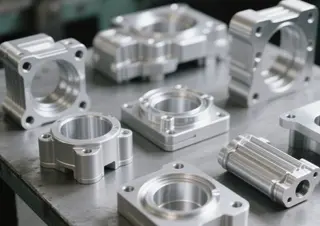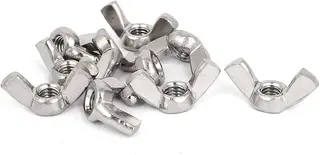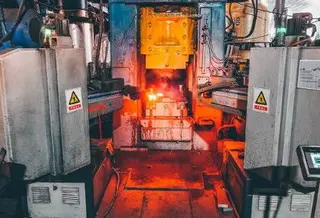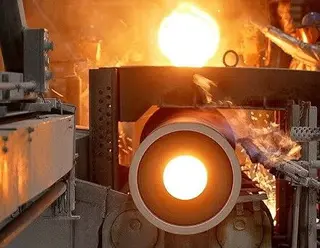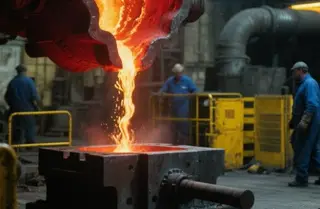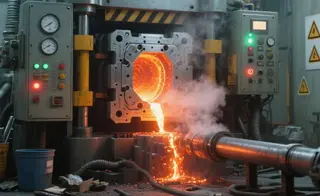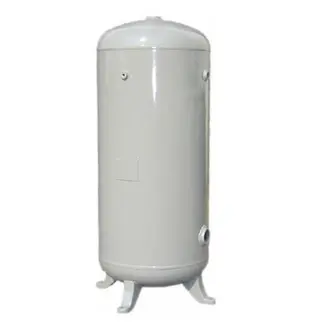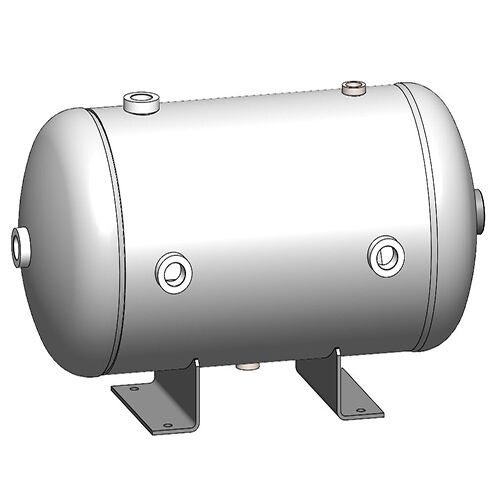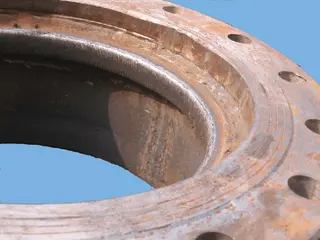What Cause Black Spot in Aluminum Alloy Die Castings?
In the aluminum alloy die casting industry, the appearance of black spots on casting surfaces is a common and troublesome problem. Although these surface defects may seem minor, they not only severely affect the visual quality of the product but may also indicate potential deficiencies in its mechanical properties. The presence of black spots often suggests that the casting has encountered multiple complex issues during production, which may involve raw material quality, the rationality of the production process, equipment maintenance, or even the skill level of the operators. Therefore, thoroughly investigating the causes of black spots and finding practical and effective solutions is not only a necessary measure for improving aluminum alloy die casting quality but also a key factor in enhancing market competitiveness and gaining customer trust.
Main Causes of Black Spots in Die Castings
During the aluminum alloy die casting process, the occurrence of black spots on casting surfaces is a persistent challenge. These spots not only affect the product's appearance but may also indicate hidden quality risks. Thus, deeply exploring the causes of black spots is critical to solving this problem.
1. Raw Material Issues
Black spot defects in aluminum alloy castings are often closely related to the quality of the raw materials. If the raw materials contain oxides, inclusions, or other impurities, or if the impurity content is excessive, these impurities may not fully dissolve or disperse evenly in the molten state, resulting in black spots on the casting surface. For example, using aluminum ingots with excessive alumina or silica oxide can cause these oxides to react with the molten aluminum at high temperatures, forming black spots that are difficult to remove.
2. Release Agent Issues
Improper use of release agents is another major cause of black spots. If the release agent is over-sprayed or contains a high amount of organic substances, these organics can partially reduce to carbon or form large organic polymers at high temperatures. These substances mix with the molten aluminum and eventually adhere to the casting surface, forming black spots. For instance, operators may excessively spray release agent to ensure demolding, while overlooking the potential quality issues this may create.
3. Casting Process Issues
Unreasonable casting processes can also lead to black spots. Improper control of molten metal temperature, or metal flow rates that are too fast or too slow, can cause local overheating or uneven cooling, resulting in black spots. Additionally, an improper cooling process can affect casting quality. For example, if the cooling rate is too fast, surface cracks and black spots may occur; if too slow, internal porosity and inclusions may form.
4. Mold Issues
The design and quality of molds play a crucial role in casting quality. If the mold design is unscientific, manufacturing precision is low, or the mold surface is damaged or worn, black spots may appear on aluminum alloy die castings. For example, a poorly designed venting system may prevent gases from escaping properly, causing pores and black spots on the casting surface.
5. Shot Blasting Issues
Shot blasting is an important process for improving surface finish, reducing fatigue, and extending the life of castings. However, improper shot blasting can also cause blackening of the surface. For instance, if the dust removal system of the shot blasting machine fails, or if the steel shots contain excessive dust, the casting surface may darken. Additionally, operators not wearing gloves and touching the blasted surface directly can leave handprints and black spots.
Solutions for Black Spots in Die Castings
After understanding the main causes of black spots, we can explore effective solutions. Since black spots involve multiple production stages, solutions must be comprehensive and targeted. Every step, from raw material selection to production details, can be a key factor affecting product quality.
1. Optimize Raw Material Selection
Choosing high-quality aluminum alloy raw materials is key to solving black spot issues. Die casting factories should collaborate with reliable suppliers to ensure raw materials contain minimal impurities. Additionally, proper storage and preservation of raw materials are essential to prevent defects. For example, raw materials should be stored in a dry, ventilated environment to avoid moisture and contamination.
2. Proper Use of Release Agents
Correct use of release agents can significantly reduce black spots. Factories can:
Reduce spray concentration: Lower the amount of release agent to avoid excessive organics forming carbon or polymers at high temperatures.
Switch to alternative agents: Use release agents with lower organic content to reduce black spots.
Extend blowing time after spraying: Longer blowing time helps reduce carbon formation and polymer buildup.
Use degasers for cleaning: Periodically clean equipment with degasers to remove impurities and gases from molten aluminum.
3. Optimize Casting Processes
Optimizing the casting process ensures high-quality castings. Factories should adjust temperature and metal flow rates according to product and material requirements to prevent black spot defects. For example:
Control molten metal temperature: Keep temperatures within proper ranges to avoid local overheating or uneven cooling.
Control metal flow rate: Adjust flow rates based on product design to ensure uniform flow and rapid cooling.
Optimize cooling process: Design cooling systems to ensure uniform cooling and prevent black spots caused by uneven cooling.
4. Scientific Mold Design
Scientifically designed molds with high precision are indispensable for avoiding black spots. Mold design should consider material flow and cooling performance to ensure uniform metal flow and solidification. For example:
Optimize mold design: Design vents and cooling systems to ensure even metal flow and rapid cooling.
Improve mold manufacturing precision: Use advanced machining to guarantee dimensional and surface quality, preventing uneven flow.
Regular mold maintenance: Inspect and maintain mold surfaces, repairing or replacing damaged areas to maintain smoothness and integrity.
5. Standardize Operational Procedures
Precise and standardized operation is crucial for preventing black spots. Factories should provide professional training and knowledge on aluminum die casting to ensure operators handle equipment and control process parameters correctly. For example:
Professional training: Regularly train operators to improve skills and quality awareness.
Operational specifications: Develop detailed procedures for strict compliance.
Strengthen quality inspection: Conduct thorough inspections during production to detect and address black spots promptly.
6. Proper Shot Blasting
Shot blasting improves surface finish but can cause blackening if mishandled. Factories should:
Repair or replace dust removal devices: Ensure proper functioning to prevent dust in steel shots.
Manage product placement: Avoid long storage or humid conditions that cause corrosion, mold, or dust accumulation.
Timely final inspection and storage: Inspect, pack, and store products promptly after blasting to prevent dust or oxidation.
Case Analysis
After thoroughly discussing the main causes of black spots on aluminum alloy die-castings and the corresponding solutions, we will now further illustrate the practical application of these theories through specific case studies.
1. Black Spots Caused by Raw Material Issues
A certain aluminum alloy die-casting factory discovered black spots on the surface of some castings during production. Upon analysis, it was found that these black spots were caused by excessive aluminum oxide impurities in the raw materials. To address this issue, the factory implemented the following measures:
Optimizing Raw Material Selection: Cooperate with high-quality raw material suppliers to ensure that the materials contain minimal impurities.
Strengthening Material Inspection: Conduct strict inspections before raw materials are stored to ensure they meet quality standards.
Improving Storage Conditions: Enhance storage conditions to prevent raw materials from absorbing moisture or becoming contaminated.
Through these measures, the factory successfully resolved the black spots caused by raw material issues, improving the overall quality of the castings.
2. Black Spots Caused by Release Agent Issues
Another die-casting factory observed a significant number of black spots on the surface of castings during production. Investigation revealed that these black spots were caused by excessive spraying of release agent, combined with a high organic content in the agent. To solve this problem, the factory took the following actions:
Reduce the Concentration of the Spraying Agent: Lower the amount of release agent used to prevent excessive organic matter from forming carbon deposits and polymers at high temperatures.
Switch to Alternative Agents: Choose release agents with lower organic content to reduce the occurrence of black spots.
Extend Post-Spraying Air Blowing Time: By prolonging the blowing time, the formation of carbon elements and accumulation of macromolecular polymers is minimized.
With these measures, the factory successfully eliminated black spots caused by release agent issues, improving the appearance quality of the castings.
Conclusion
The appearance of black spots on aluminum alloy die-castings is a complex issue involving raw materials, release agents, casting processes, mold design, and shot blasting, among other factors. By optimizing raw material selection, using release agents appropriately, improving casting processes, designing molds scientifically, standardizing operational procedures, and conducting reasonable shot blasting, die-casting factories can effectively reduce black spots and enhance both the quality and appearance of castings.
Additionally, factories should strengthen quality inspection to promptly identify and address issues, preventing defective products from reaching customers and affecting their experience. Only by doing so can die-casting factories maintain a competitive edge in the market and earn the trust and support of their customers.
Send your message to this supplier
Related Articles from the Supplier
What is a Cold Forged Stainless Steel Wing Nut?
- Sep 06, 2024
What Influence Aluminum Alloy Casting Quality
- Nov 06, 2024
What is Stainless Steel Precision Casting Process
- Jan 08, 2025
What is Multi-Directional Die Forging?
- Feb 11, 2025
What is Centrifugal Casting Technology?
- Apr 17, 2025
What is Permanent Mold Casting?
- May 22, 2025
Related Articles from China Manufacturers
What Cause the Corrosion in Air Storage Tanks
- Jun 16, 2024
What Cause Diesel Generator Starting Failures?
- Oct 27, 2024
What Cause The Valve Sealing Surface Damage
- Dec 30, 2016
What is the cause of valve cavitation?
- Jul 22, 2024
Related Products Mentioned in the Article
Supplier Website
Source: http://www.forging-casting-stamping.com/what-cause-black-spot-in-aluminum-alloy-die-castings.html

